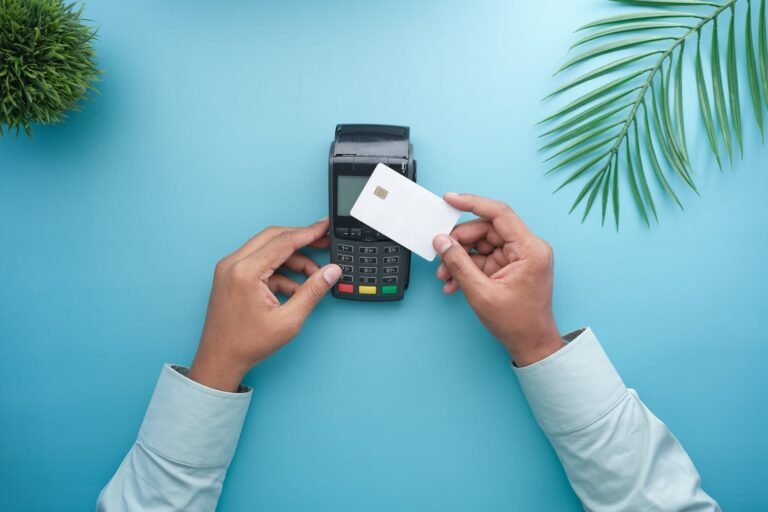Near Field Communication (NFC) is an advanced wireless communication technology that enables communication and data transfer between two devices over short distances. It is being used in a variety of industries, such as healthcare, transportation, marketing, and payment hubs.
NFC is revolutionizing our daily lives, providing convenience and sustainability solutions. In this article, we will explore what NFC is, how it works, and the different uses and benefits of NFC.
We will also discuss how it is being used to promote sustainability and how it is impacting our daily lives.
Key Takeaways
- NFC allows for wireless communication between devices through radio frequencies.
- NFC is primarily used for mobile payments, making the checkout process faster and more convenient.
- NFC technology is used in various industries like healthcare, transportation, and marketing.
- NFC contributes to sustainability by reducing the need for physical payment methods and documents and promoting digital transactions.
Introduction to Near Field Communication (NFC)
Near Field Communication (NFC) is a short-range wireless communication technology that uses radio frequencies to transmit data over a few centimetres securely. It is used in smartphones, payment hubs and other devices to facilitate data exchange.
NFC works by using a small antenna to transfer data from the device to the reader. The data is then read and processed by the reader. It differs from RFID, which has a larger range and can store more complex data.
NFC is widely used in healthcare, transportation, and marketing industries. It is an important part of our daily lives, making transactions faster and more efficient.
Understanding NFC
Near Field Communication (NFC) is a technology that enables wireless communication between devices. To understand how NFC works, it is important to understand the role of the NFC chip and its common uses.
In this article, we will explore how an NFC chip works and the various ways NFC can be used.
How an NFC Chip Works
By understanding how an NFC chip works, we can gain insight into the benefits of Near Field Communication (NFC).
The chip contains programmed data, which is transferred via an antenna connected to the chip. The antenna uses radio frequencies to send information to the reader.
NFC chips are found in all NFC products, such as smartphones and payment hubs. This helps to facilitate the exchange of data, from contact sharing to mobile payments.
It also reduces the need for physical payment methods and documents, contributing to a more sustainable future.
Common Uses for NFC
NFC technology is utilized in a variety of industries and in everyday life. It enables contactless payments, contact sharing, and personalized content for marketing purposes. NFC also tracks medical equipment and verifies patient and provider identities in the healthcare sector.
NFC enables contactless google review cards, ticketing on buses, trains, and subways in transportation. NFC can also contribute to sustainability by reducing the need for physical payment methods and documents.
NFC and Sustainability
Through the use of NFC technology, it is possible to reduce environmental impact and promote sustainability. NFC can help conserve resources, reduce waste, and create efficiency.
Benefits include:
- Eliminating the need for physical payment methods
- Exchanging data between devices without printing documents
- Utilizing reusable products made from sustainable materials
- Promoting digital transactions instead of physical ones.
NFC vs. RFID: Key Differences
Building on its sustainability benefits, NFC’s distinct advantages over RFID technology should be noted.
NFC operates with radio frequencies and can transfer data over a short distance, while RFID has a larger range and can store more complex information.
NFC chips contain specific programmed data that can connect to websites, contact sharing, and payment hubs. NFC readers are found in smartphones and payment hubs, while RFID readers are more commonly used for tracking and inventory.
NFC is faster and more convenient, while RFID is more suitable for long-range applications.
What to Explore Next
Further exploring the advantages of NFC, it is important to understand the potential applications of this technology as well as additional ways to use it. Here are some key points to consider:
- Use NFC for secure mobile payments.
- Utilize NFC tags to trigger actions on a smartphone.
- Leverage NFC to track medical equipment and verify patient identities.
- Take advantage of NFC to facilitate contactless ticketing.
Considering these points, NFC is becoming an increasingly important part of the modern world, offering convenience, security, and sustainability.
Frequently Asked Questions
How Secure Is NFC Technology?
NFC technology is generally secure and is backed by encryption protocols. It uses short-range radio frequencies to ensure secure data transfer and communication between devices. NFC is more secure than traditional contactless payment methods, as it requires authentication from both the user and the reader.
What Types of Devices Are Compatible With Nfc?
NFC is compatible with most smartphones, tablets, and smartwatches. Additionally, some modern laptops, printers, and cameras are able to support NFC communication. Many payment terminals, including those found in retail stores, also feature NFC technology.
Is NFC Available in All Countries?
NFC is widely available in many countries around the world, with increasing adoption in recent years. It can be found in smartphones, payment hubs, and other devices. In some countries, however, NFC technology is not as pervasive.
What Is the Maximum Distance for NFC Communication?
NFC communication has a maximum range of about four inches. This is due to the radio frequencies that the chip uses to transfer data to the reader. The distance is limited by the size of the antenna/inductor in the device.
How Can Businesses Use NFC Technology?
Businesses can use NFC technology to facilitate contactless payments, share information quickly, and track data. NFC tags can trigger actions on a user’s device, such as opening a website or sharing contact information. Additionally, NFC can be used for marketing, ticketing, and other applications.
Conclusion
Near Field Communication (NFC) is an innovative technology revolutionising how we interact with the physical world. It provides convenience, security, and sustainability solutions, enabling us to reduce our reliance on traditional systems and processes.
By understanding the technology and exploring the different uses of NFC, we can gain insight into the potential of this technology and its impacts on our lives.
With further development and exploration, NFC has the potential to bring about a sustainable and secure future.





